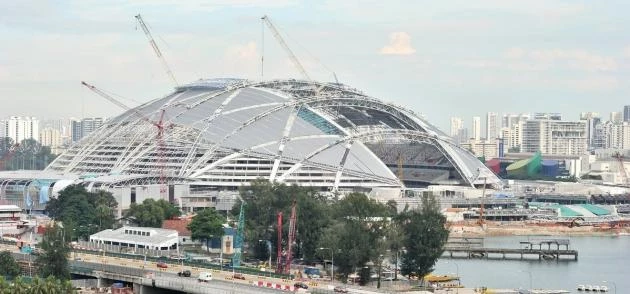
Partner Article
East Asia as the Global Factory
Over the past decades, East Asia has been the most successful region in the world in building up cross-border supply chains and has subsequently become described as “Factory Asia”. In a form of “triangle trade”, advanced countries in East Asia exported sophisticated parts and components to less developed countries in the region, where these are assembled into final consumption goods and then shipped to rich-nation markets, especially in the United States and Europe. No wonder two of its countries, Japan and South Korea has been included in 1st world countries.
An example of businesses that flocks this region is Cedar Capital Group, based in Singapore and now expands it business of selling and renting capital equipment to East Asia by employing agents in Tokyo, Japan and Seoul, South Korea. Both countries has also been one of the manufacturers of top and world-renowned products and heavy equipment which Cedar has also been specializing in. It will not be too long before the company gets an office in both cities for expansion and growth.
Exports in the region include capital goods, including machinery and equipment used by producers as inputs for production. We all know that Mitsubishi, Hyundai, Isuzu and other top brands are created and manufactured in the region.
In UN Comtrade and CEPII data, the exportation records of these products are also overwhelming. Volumes and tons of materials and products are shipped to the almost impossible destinations. The first obvious observation is that the average distance traveled by each commodity type increases with the stage in the production chain. Whereas primary and intermediate goods are shipped over the shortest distances, capital and consumption travel furthest. Studying the evolution over time, it has been observed that the average distance for primary goods was relatively stable for most the time period. However, East Asia’s trade in intermediate goods fell until 2004 and has been relatively stable since then. In addition, more and more capital goods stay in the region and supply the Factory Asia with the necessary equipment.
East Asia remains the ‘global factory’ and due to its economic size and dynamic economic development is also on its way to become the global mall. The region is expected to benefit from this evolution via capturing an increased share of global production of high value-added activities as well as reduced trade costs. These two consequences could be expected to further enhance economic growth of East Asia and further accelerate the region’s transformation into a global mall. However, this transformation will only be possible if East Asia continues on its current trajectory of peaceful and sustained economic growth.
This was posted in Bdaily's Members' News section by Mark Paul Lucas .








 A year of resilience, growth and collaboration
A year of resilience, growth and collaboration
 Apprenticeships: Lower standards risk safety
Apprenticeships: Lower standards risk safety
 Keeping it reel: Creating video in an authenticity era
Keeping it reel: Creating video in an authenticity era
 Budget: Creating a more vibrant market economy
Budget: Creating a more vibrant market economy
 Celebrating excellence and community support
Celebrating excellence and community support
 The value of nurturing homegrown innovation
The value of nurturing homegrown innovation
 A dynamic, fair and innovative economy
A dynamic, fair and innovative economy
 Navigating the property investment market
Navigating the property investment market
 Have stock markets peaked? Tune out the noise
Have stock markets peaked? Tune out the noise
 Will the Employment Rights Bill cost too much?
Will the Employment Rights Bill cost too much?
 A game-changing move for digital-first innovators
A game-changing move for digital-first innovators
 Confidence the missing ingredient for growth
Confidence the missing ingredient for growth